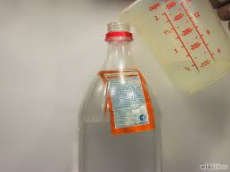
Email: ZYVC057@live.rhul.ac.uk
Total Article : 213
About Me:I'm a graduate student studying International Criminal Law and first started writing for King's News almost 4 years ago! My hobbies include reading, travelling and charity work. I cover many categories but my favourite articles to write are about mysteries of the ancient world, interesting places to visit, the Italian language and animals!

Everyone loves ketchup, but did you know we can make a Ketchup sachet float or sink as we please and when we please by using science?! This is one cool experiment which will not leave a mess and, if you’re a true Ketchup lover like myself, you can even try eating the Ketchup after the experiment, after all it is in a sealed packet!
What you’ll need:
- A see-through plastic bottle, either a 1ltr or 2ltr one!
- Salt
- A packet of Ketchup you can get from almost any fast food place near you
What to do:
Step 1 - If the bottle still has any labels on it then remove them ensuring you can fully see what’s inside the bottle, then fill it with water
Step 2 – Place the Ketchup inside the bottle. If the Ketchup remains afloat you can follow the instructions in step 3, if not proceed directly to step 4.
Step 3 – If you’re Ketchup is successfully floating then put the tap back on the bottle. Make sure the lid is on properly then squeeze the sides of the bottle. If the Ketchup sinks when you squeeze the bottle and floats when you leave it then well done, the experiment works! If the Ketchup fails to sink when you squeeze the sides of the bottle then try using a different packet or switch it for some mustard or other sauces instead!
Step 4 – Don’t worry if your Ketchup is not yet floating; just add a few table spoons of salt to the water. Carefully put the lid on the bottle tightly and shake it up and down repeatedly until the salt dissolves. The water may be slightly foggy for a while but it does clear up.
Step 5 – Add more and more salt until the Ketchup is floating at the very top of the bottle! When the Ketchup has been floating at the top consistently make sure the bottle is full of water, reaching the top of the bottle, and put the lid on again.
Step 6 – Now all that’s left to do is practise! Squeeze the bottle and the Ketchup should sink, release it and it should float!
What has happened?
So, after you have mastered the art of commanding the Ketchup to jump at your every beck and call and follow your commands you may want to know a little more about what has actually happened. The two key things this experiment observes are buoyancy, that is the capacity an object has to stay afloat, and density, which is concerned with how much mass an object has. When salt is added to the water it changes the Ketchup’s density allowing it to stay afloat. There’s a tiny bubble in the packet of Ketchup which will help it float; when you squeeze the bottle you are applying pressure to the Ketchup packet so the bubble becomes smaller and the packet becomes denser than the water around it. If an object is denser than the liquid it is in it will sink so the Ketchup sinks. When you release the bottle the bubble expands causing the Ketchup to become less dense and more buoyant which allows it to float! If you become an expert, you can even make the Ketchup stay suspended in the very middle by applying slight pressure on the bottle without being too forceful. Have fun!

0 Comment:
Be the first one to comment on this article.